H. A. Rey’s wordless narrative, Flying Fishes, is deceptive. It is sophisticated adult reading in the guise of a children’s fable. It’s a satirical jab at the Nazi Race Laws of the 1930s. For a discussion of this see H. A. Rey – Satirist or Subversive?
How the Flying Fishes Came into Being is an eight panel wordless story purporting to explain how flying fish were a result of a romance between a fish and a bird – Warning – this may not be scientifically accurate.
The full 8 panels can be seen at the bottom of this page but in black and white from the later German publication, not in their original colour.
It was published by at least the following publishers:
- Chatto & Windus printed the story in 1938 using a colour half-tone process with 8 colour images based on Rey’s original watercolours,
- The Macmillan Company of Canada Ltd – Chatto & Windus archives (Reading, UK) received press clippings from Macmillan in 1938 showing reviews in Canadian newspapers of How the Flying Fishes Came into Being stating the book was published by Macmillan and selling for 35 cents. When contacted, Macmillan archives (at McMaster University) did not have any records of print runs or of the reviews.
- Any information about the Macmillan publication would be appreciated with a credit line to the contributor.
- The Courier Magazine printed the story in 1938 (and 1948) using a colour half-tone process with only 6 images,
- Das Blatt der Hausfrau printed the story in 1940 using all 8 images but reproduced in black and white half-tone.
Chatto & Windus
Title: How the Flying Fishes Came Into Being – A Story in 8 Pictures
Author: H. A. Rey
Illustrator: Hans Augusto Reyersbach aka H. A. Rey
Date of publication: 5,208 copies were ordered on June 21, 1938 and the bound copies were delivered that summer
Publisher: Chatto & Windus
Place of publication: London
Printer: W. S. Cowell, Ltd: Ipswich
Copyright: Chatto & Windus
Dimensions: 7 x 9″ (17.8 x 22.9 cm )
Dust jacket: No
Binding: blue cord??; three hole punched
Boards: thin card
Language: English titles, etc
Paginated: unpaginated
Printed: verso and recto
Edition: Trade only
Printed: Rey did watercolours for this and they were reproduced in colour using a half-tone process,
Description: cover image plus the story in 8 pictures; this story purports to explain how flying fishes were the result of a romance between a bird and a fish.
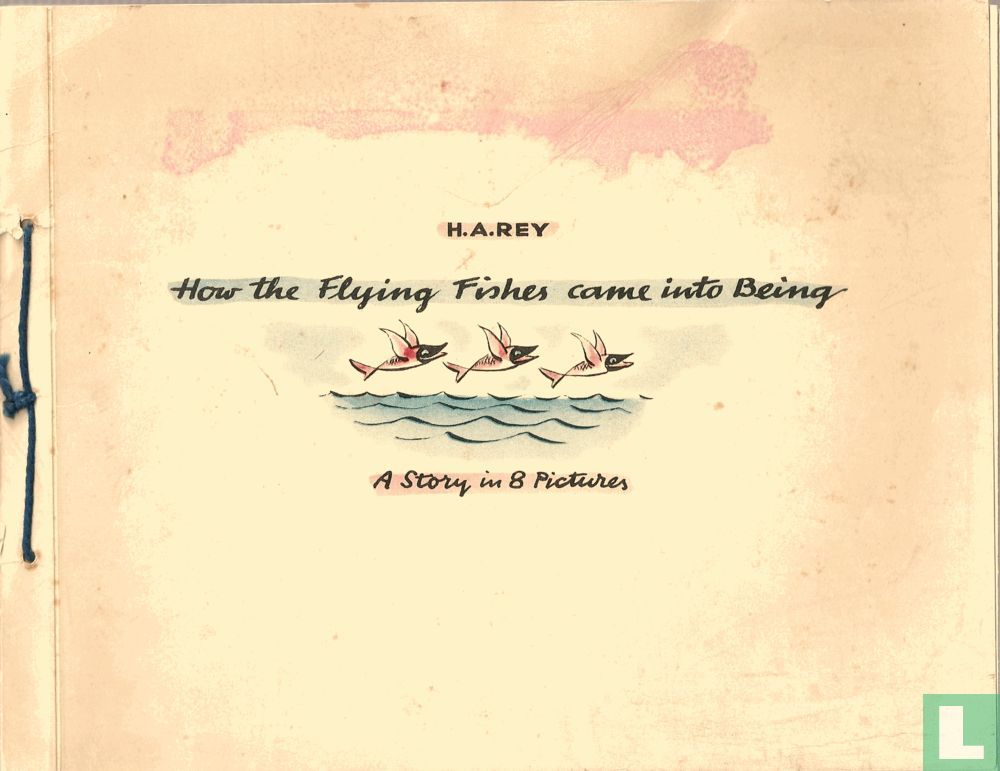
Image credit: Lost Dodo
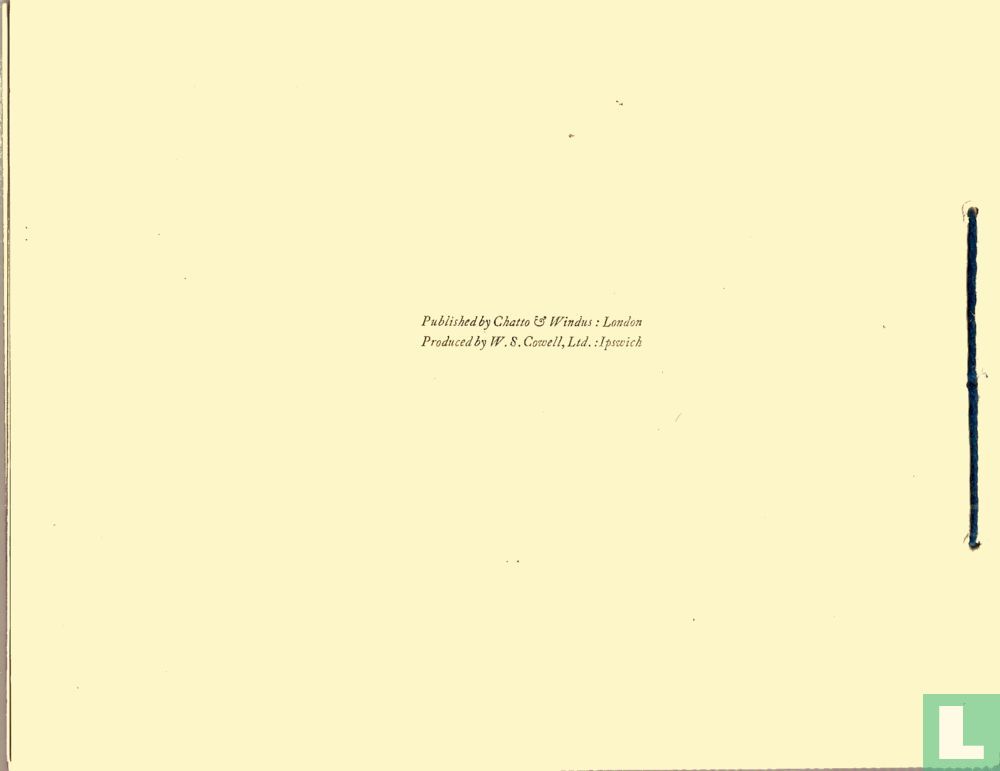
Image credit: Lost Dodo
Courier Magazine Ltd. 1938

References the printer used by Chatto & Windus, W. S. Cowell, but as far as
I can ascertain there is no relationship between C&W and Courier.
Based on the advertisements, Courier appears to have catered to an upper middle-class and above demographic. It attempts to strike a “smart” tone with a number of satirical articles along with coverage of the arts, fashion, and current events. The issues (at least in the late 1930s) have an emphasis on the actions of Germany.
Title: How the Flying Fishes Came Into Being
Author: H. A. Rey
Illustrator: H. A. Rey
Date of publication: 1938, Summer edition, pp 125 – 128
Publisher: Courier Magazine Ltd.
Place of publication: London
Copyright: Chatto & Windus
Language: English titles, etc
Description: printed in colour. The title in the index is slightly different from C&W, The Birth of a Flying Fish but on p.125 it reads the same as C&W. Also, unlike the C&W original publication, Courier only used six pictures. The full eight images can be seen in the German publication at the bottom of this page.
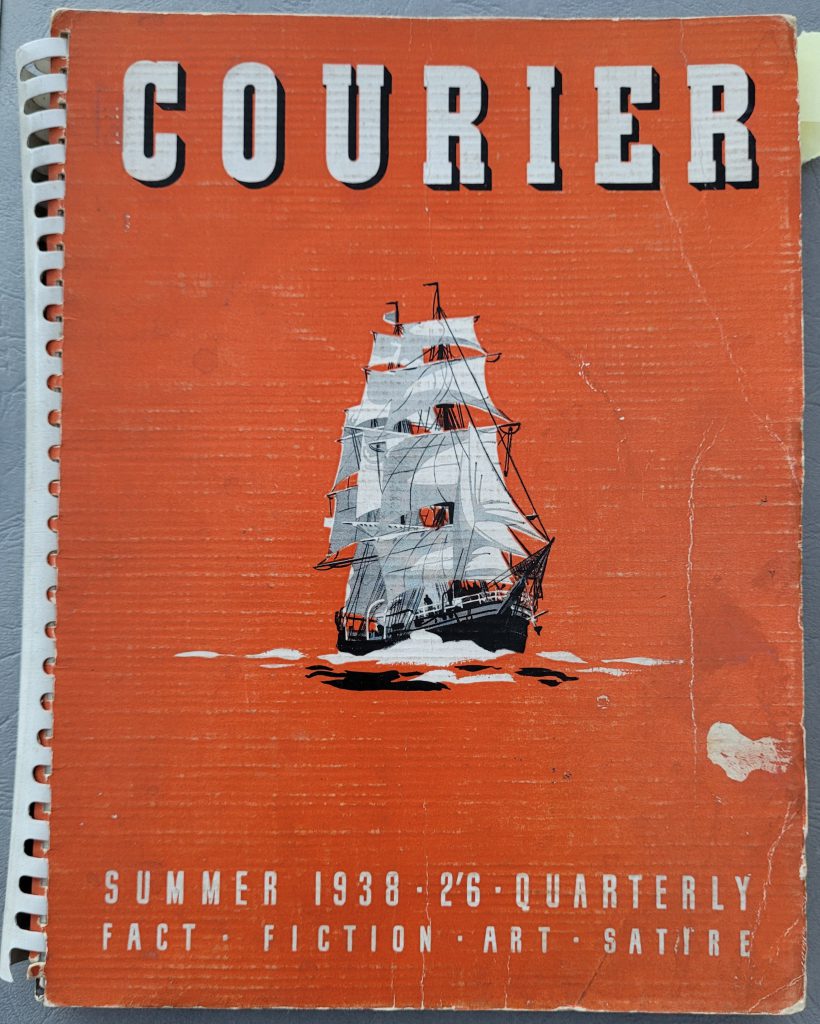
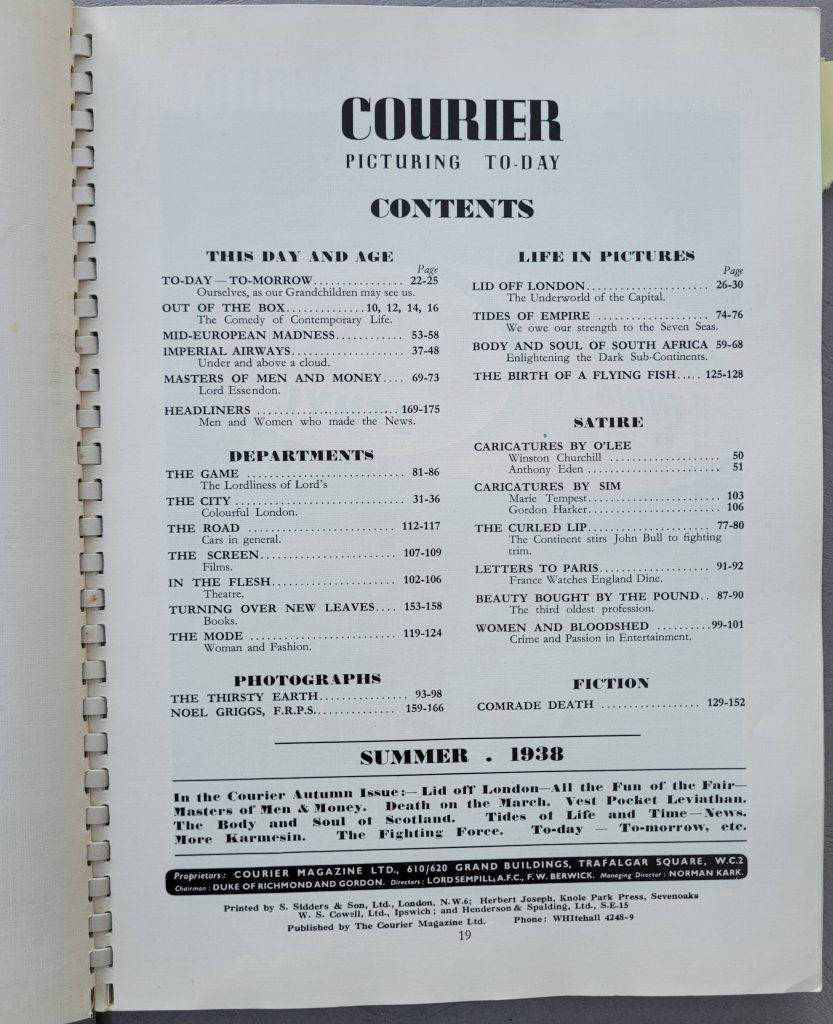
Rey’s pictures are indexed at pp 125 – 128.
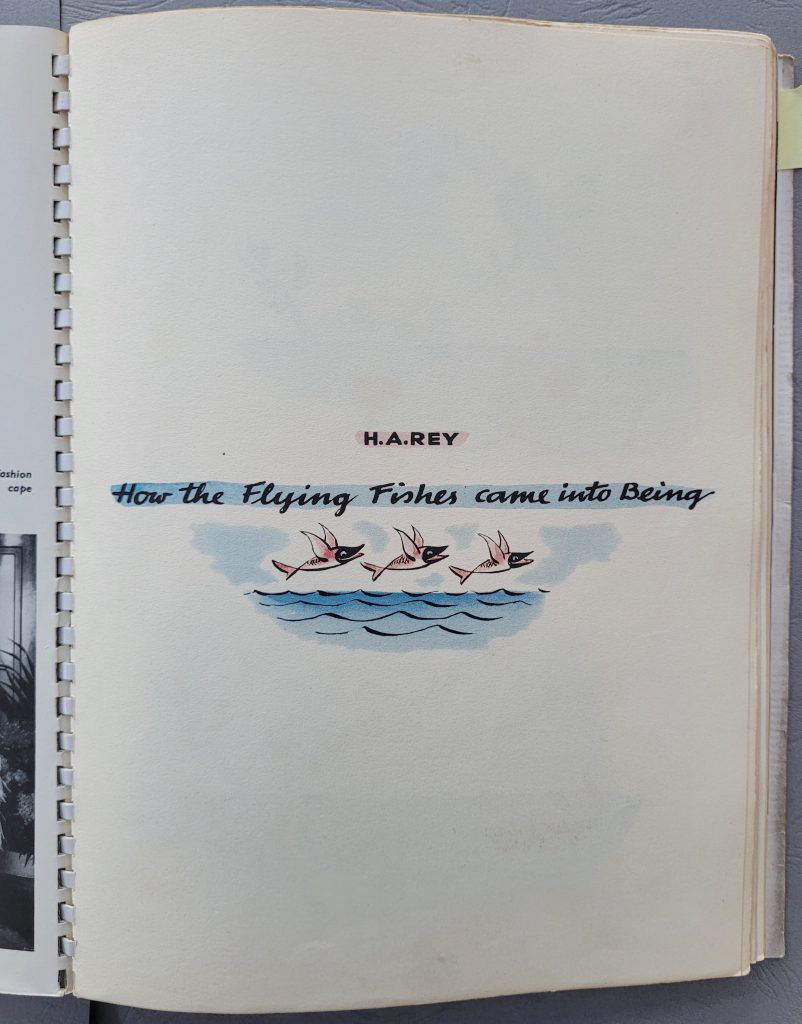
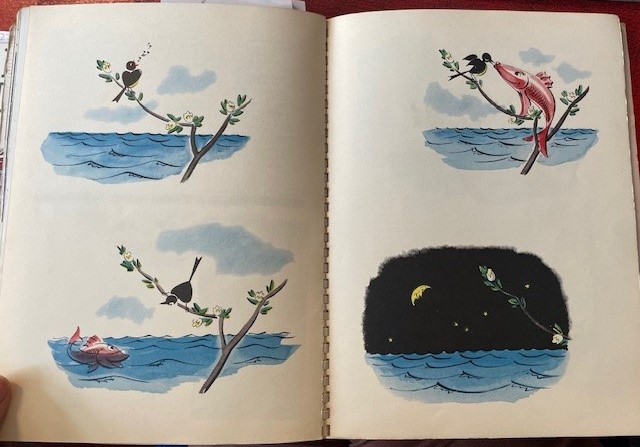
between these two pages but the story still reads well. The night
scene, bottom right, gives privacy to the two lovers but the
moon can be seen looking down and smiling.
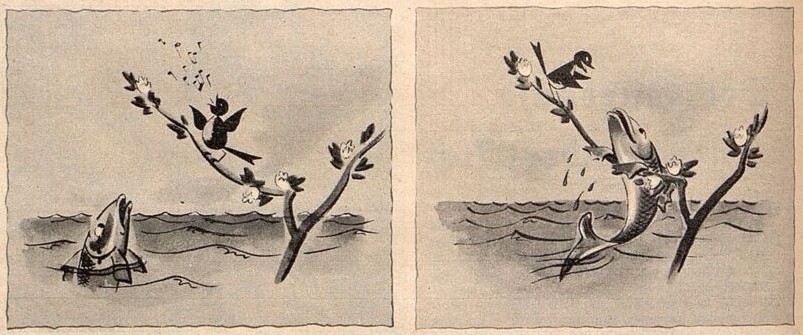
They show the developing relationship between the two lovers.
They give a bit more continuity to the story but are not essential.
Image from Das Blatt der Hausfrau below
Das Blatt der Hausfrau 1940 (The Housewife’s Paper)
Das Blatt was a German twice monthly magazine with entertainment, stories, and household management advice. At least in the late 1930s it only occasionally had cartoons. H. A. Rey is the only artist who appeared in multiple (3) editions during this time.
Title: Woher Stammen die Fliegenden Fische? (Where do Flying Fish come From?)
Author: H. A. Rey
Illustrator: H. A. Rey
Date of publication: no. 15: p. 446; April 1940
Publisher: Deutscher Verlag
Place of publication: Berlin
Language: German title
Description: below is a detail from p. 446 showing all 8 panels of the story but in black and white half-tone.
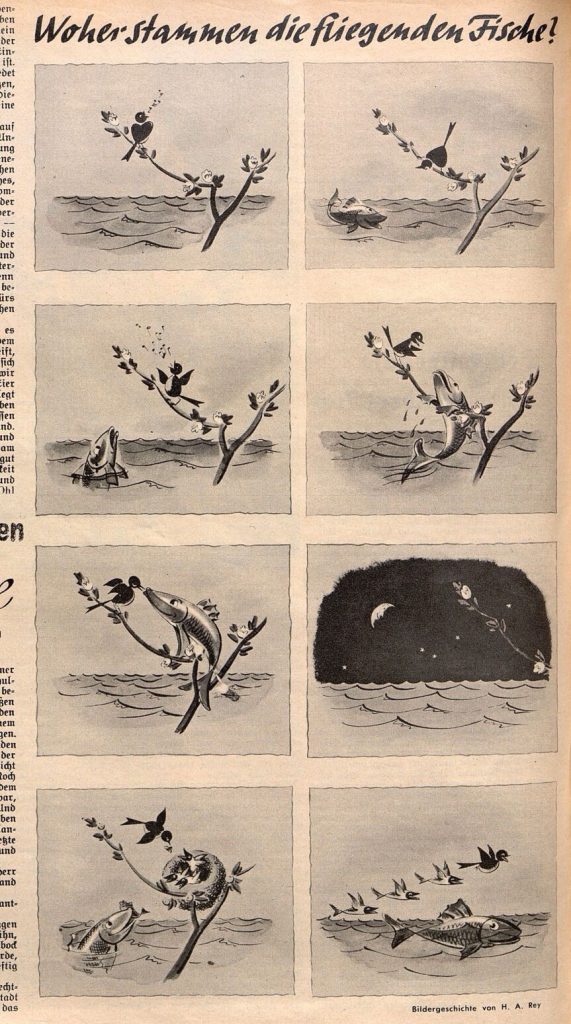
COMMENTS
If you disagree with something on this page, have an improvement, or have a comment please contact me
wn at wordlessnovels.com
Any information used will be given a credit line.